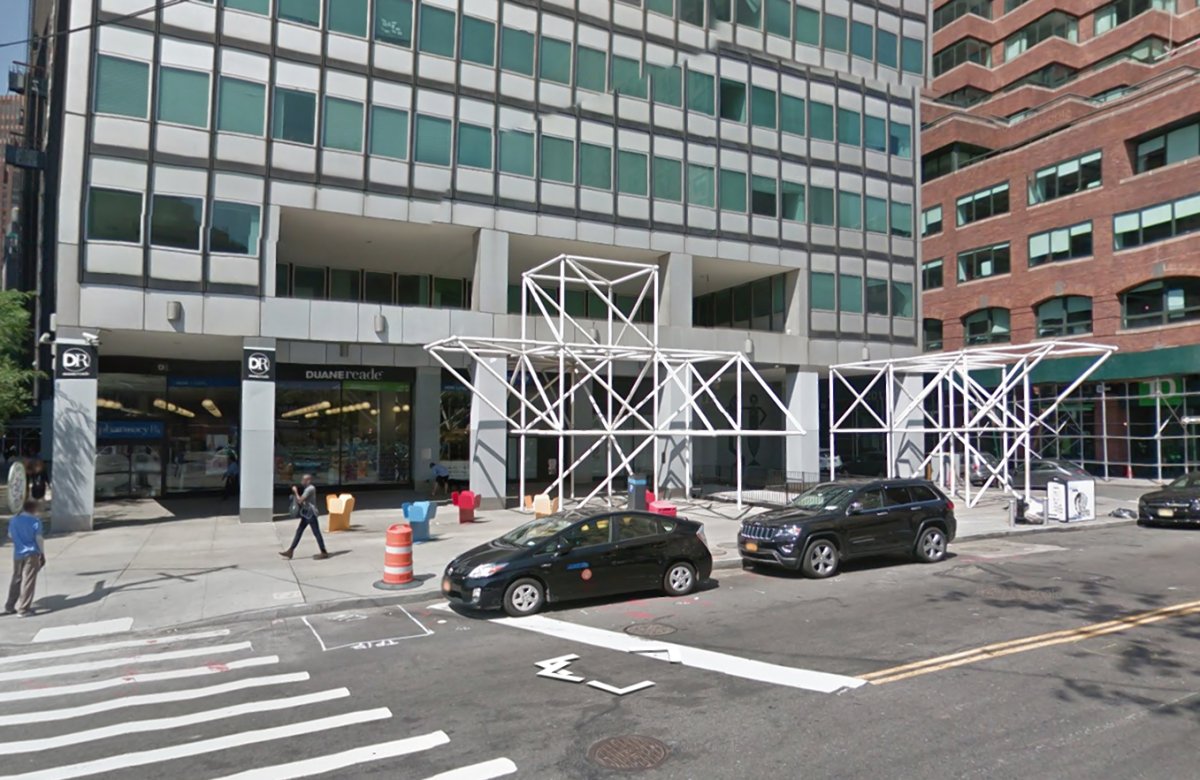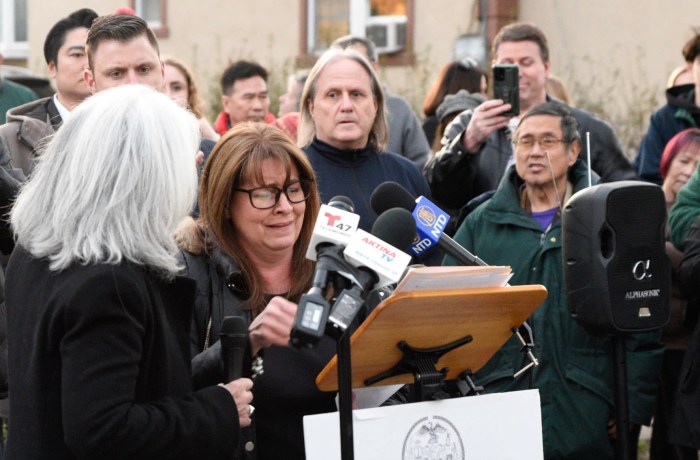
The owners of 200 Water St. have received permission to fill in its pedestrian arcades along Fulton Street with retail and luxury housing.
via Google Streetview
BY COLIN MIXSON
Come hell or high water, this plan was getting approved.
The City Planning Commission approved on Dec. 13 a developer’s scheme to convert public space along Fulton Street into market-rate housing and ground-floor retail, defying locals who condemned the deal as a land grab without “any compensating amenity,” according to the civic honchos at Community Board 1.
“We have the community board, every Downtown elected official and state elected official, and we have these other civic organizations, all of which say this is a bad idea,” said Paul Hovitz, vice chairman of CB1. “This flies in the face of all of the interested parties, except for the one with the vested financial interest.”
The commission’s vote gives Rockrose Development full permission to more-or-less eradicate the public arcades at 200 Water St. by filling them with 3,000 square feet of retail space and more than 1,700 square feet of second-floor luxury housing along Fulton Street, in exchange for modest pedestrian improvements, such as benches and tree planters, which Community Board 1 described as inadequate compensation for locals in a September resolution opposing the plan.
The mixed-used tower’s original builder constructed the arcades — called Privately Owned Public Spaces, or POPS — in the early 1970s as part of a deal with the city which permitted the developer to build taller in exchange for providing the public amenities. The 200 Water St. arcade was fêted by critics at the time, and even graced the cover of Progressive Architecture Magazine shortly after completion.
But the city failed to include provisions mandating the original developer and subsequent landlords maintain the privately owned arcades, which quickly lost their luster as the properties changed hands.
In 2016, the Department of City Planning, along with the Downtown Alliance, a local business advocacy group, championed a zoning text amendment intended to revitalize Water Street by encouraging landlords to transform the arcades at 17 properties into retail space, and Rockrose is the first business to take advantage of the new rules.
But Rockrose’s proposal, which sought to fill-in what many describe as among the most handsome and best utilized of the affected POPS, faced strong pushback from CB1 and local elected officials. It also drew criticism from many non-profit organizations — including The Municipal Art Society, Friends of the Upper East Side, Landmarks West, Tribeca Trust, Upper East Side Historic Districts, Friends of POPS, Civitas, and City Club — which all sent letters protesting the plan well in advance of a Nov. 13 hearing of the City Planning Commission.
But those letters were only delivered to commissioners on the weekend before the Monday afternoon hearing, and were only vaguely mentioned in testimony provided by Department of City Planning rep Richard Suarez during the meeting, leading opponents of Rockrose’s scheme to accuse the city agency of actively promoting the landlord’s redevelopment scheme.
The fact that city planning director Carl Weisbrod was the former head of the Downtown Alliance — the Water Street text amendment’s biggest cheerleader — made many locals feel like the fix was in, according to one Downtown architect.
“The text amendment was written based on the Downtown Alliance’s interests, which was run by Carl Weisbrod, who became head of city planning,” said Alice Blank. “It’s very disheartening.”
At the vote to approve the proposal, City Planning Commission Chairwoman Maris Lago took the unusual step of providing comments justifying her decision to approve the proposal, claiming that, while the developer does stand to benefit, it’s community members who are the real winners.
“With the proposed changes, the public will benefit from greatly improved open spaces that create a vibrant and attractive link among Water Street, Fulton Street and South Street Seaport,” said Lago.
Lago touted the 200 Water St. proposal as an example of exactly the type of change the text amendment was written to achieve, and said she hopes other developers will take advantage of the zoning change in the near future.
“We would hope to see this vibrancy spread along the Water Street corridor in future applications under the 2016 text amendment,” she said.
The chairwoman’s words were no comfort to fans of the plazas, said Blank.
“When you have this kind of public outcry — overwhelming, obvious interest in not seeing this public space filled in — from experts, urban designers, architects — not just your average Joe — and then you have all your elected officials and the entire community board, you have to ask yourself what is good about this?” Blank said. “I feel very pessimistic.”

















